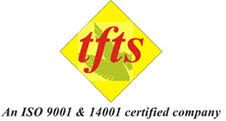
Though the basic norms for writing a good resume will always be the same – well systematized, well written, and well modified – job seekers in 2020 must also be paying attention to new resume trends. Identify what recruiters are looking for – and liking or following – in resumes right now is advice which could change your search for job in 2020.
From the past few years, we discovered that it was time to discard the resume objective in favor of a professional testimony and that job seekers should never, ever send their resumes out in a text format or layout. But what should you do in 2020 to display you are on top of your job search and giving attention to the latest trends in resume writing?
In this blog, Mr. Atul Mahajan, Director, Trendsetters Facilities & Technical Services (TFTS), India’s leading temporary staffing and outsourcing company is going to share 6 such points, if you follow them then the probability of getting yourself a desired job can become easier. Here are the following 6 points to follow:
- Resume design matters:
A good resume design is appealing, without being an eyesore. This pattern is simple and clean, with a smooth aesthetic that sets it different from every other resume out there.
Don’t be overly heavy-handed with italics, bold, and all-caps – use them scarcely, and for importance. The finest resume fonts look good on both a screen and on a sheet of paper, so choose a current style, and do a trial print before you forward it off to employers. You should stay away from Times New Roman. That’s not the font to be used.
- Format your resume so the best parts are on top:
The top one-third of your resume is a valuable real asset, so make it count.
Instead of a mailing address, a good resume idea is to add your LinkedIn address next to your name and contact details. While you’re at it, make sure your LinkedIn profile is as forceful as it can be, and an accurate reflection of your contention.
The significant majority of professions use LinkedIn. So, your profile not only has to exist, it also has to assist your resume.”
Objective description on your resume are a thing of the past (“This is a marketing document, not a personal letter). Use a summary testimony instead, which is basically just an elevator pitch to show why you’re the best individual for this job.
When it makes logic, change the title on your resume to match how it’s described in the job listing, If the company is looking for a “Marketing and Advertising Director,” and you meet the credentials, it’s in your best interest to use that title something like “Senior Manager of Marketing and Advertising.”
Scan everything through the lens of ‘what should I want in my next job? “If you want to be competitive in modern day’s job market, you have to be able to advertise or promote yourself.”
- Defeat the resume bots:
Big organizations don’t have time to analyze through the multiple resumes they get for every open position. So, they get applicant tracking systems to do it for them.
It works like this: When you upload your resume to an online job portal, an ATS scans it for keywords related to the job you’re applying for. The main motive of these programs is to carve down candidates, so the majority of resumes are promptly eliminated.
Generally, about 75% of candidates are taken out of consideration before an HR ever sees their resume. So, you have to organize your resume based on a section of technology.
ATS systems are made to scan vertically, thus, resumes that are aligned down the center are a safe bet.
Another process to pass the bot test is modifying your resume to include some of the keywords or skills from the job posting. If you’re not sure of which words to choose, then you can paste the text from the job posting into a free word cloud app or tool, that will show you which resume skills, technologies, and qualifications the posting references mostly.
- Create a balance:
To give some variety, use a mix of paragraphs and bullets all through the resume body.
The same way goes for the actual content. When you’re deciding what resume skills to add, technical and other expert-level know-how should definitely get first priority.
Some soft skills, like those that shows leadership, negotiating, and communication skills, are good to add to your resume in restraint. But be selective. You need to avoid being overly fluffy.
- Walk the walk:
Shun the temptation to stuff your resume with “responsibilities.” Employers look far more about your successes, and how you can repeat them at their company.
Be clear, and provide relevant statistics wherever you can. Revenue growth, client growth, and expenditure saving are easy to count-and are resume gold.
Never have any numerical-driven examples. Look to your skills section and think about how to authenticate that section. Are you the go-to resource for new appoints, or for customer queries? Do you expertise in increasing efficiencies, or decreasing defects? Have you ever acted in a leadership role, even if it wasn’t in your job description?
- Always Be Selective:
The more congested your resume appears, the less likely you are to hold a recruiter’s attention. Instead of stuffing every entry-level job and internship you’ve ever had onto one sheet of paper (two sheets if you have more than 10 years of experience), pick and select the roles most pertinent to the one you’re applying for.
Be discerning in your descriptions. The actual date you started and ended your previous job, or the year you graduated from college, is probably immaterial.
Reading a resume is a dull and tedious thing. Think about the most captivating things you want to share with your audience, and move along.



